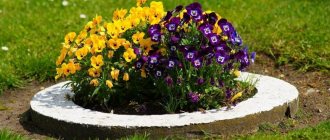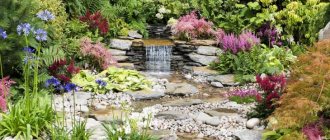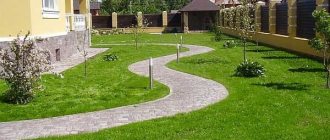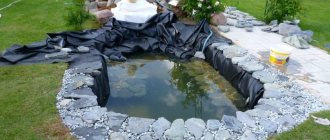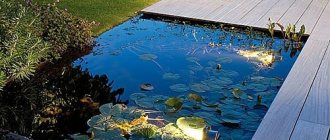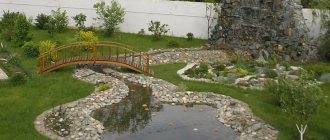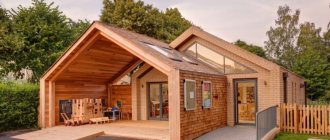Climbing plants for the garden can perform different functions. They can block out street noise, hide an ugly wall, or disguise a dried tree. Fences and fences, gazebos, arches also look especially good when they are decorated with vines.
We'll tell you what plants can be grown in dachas and garden plots in Central Russia and the South. We will provide colorful photographs for each species, with the help of which you can evaluate the decorative properties of vines.
Climbing roses for the garden
Climbing roses are considered the most beautiful plants, most of which are also easy to care for. You don’t need any special skills to grow, you just need to perform the usual manipulations - watering, loosening the soil, removing damaged stems. Climbing roses grow on almost any soil and tolerate both open sunlight and shaded areas.
To grow this type of rose, you need to make a special trellis: the shoots do not know how to cling to rough surfaces on their own. Fertilizers for flowering plants need to be applied periodically. To stimulate flowering, part of the shoots must be set in a horizontal direction.
If you wish, you can choose roses that bloom almost the entire season: from late spring until frost.
Varieties of climbing vines
Let's be clear right away that vines are a life form of plants, not a variety. They are all divided into two main groups: perennials and annuals. Both types can be either decorative or fruit-bearing.
Today you will find out which climbing vines are widely used in our country.
It’s good if you think about planting flowering plants, despite the changing seasons - from spring to late autumn, so that some flowers replace others. Low-growing bulbous bulbs are suitable for planting early flowering ones:
- crocuses,
- snowdrops,
- hyacinths,
- low growing irises.
The evergreen carpet is created by succulents, they are also drought-resistant - echeveria, pachiveria, sedum, sempervivum, young. Herbaceous meadows - lilies of the valley, gentian, gypsophila, iberis, saxifrage, tenacious, sedum, daisy, cinder, thyme, periwinkle, bergenia.
Clematis - a lush flowering vine
Clematis are loved by gardeners in different regions. A powerful, strongly weaving vine at the moment of flowering turns into a bright plant. In some varieties, the inflorescences can reach the size of a tea saucer and completely cover the green mass. This feature allows you to use clematis to decorate gray walls and create picturesque hedges.
The plant clings to the support on its own, with leaves and petioles. A trellis of twigs up to 3 cm thick is built for it. If the diameter is larger, the clematis will have to be tied, which can lead to damage to the shoots.
You can combine several types of clematis on one trellis, creating a variegated climbing covering.
Where are climbing plants used?
Most ornamental crops are used to create a green wall. These plants allow you to correctly zone the site into several separate zones. As they grow, they need an additional frame to prevent damage to the main stem.
Thanks to this design, it is possible to regulate the position of the foliage and branches of the vine. Arches for climbing plants are in particular demand among gardeners. They are made from wooden or metal rods.
There are through holes throughout the entire body of the product into which green shoots penetrate. These parts allow you to fix the lashes. This type of decoration is placed at the entrance to the garden.
Fast-growing climbing plants are often used to create secluded corners in the garden. They allow you to make a green fence in one summer season.
As they grow, they form dense, dense foliage, which prevents through air movement and protects from the annoying sun.
In most cases, weaving species are used to decorate verandas and various fences.
The main requirement of this variety is the presence of additional support for climbing plants. It allows you to guide young shoots, thereby preventing their mechanical damage.
Wisteria - a plant for warm climates
Most varieties of wisteria are not adapted to the harsh Russian conditions and can only be grown in the South. However, there are exceptions: breeders periodically develop new varieties that are resistant to frost.
Wisteria is a vine with a woody trunk, individual vines of which can reach up to 15 cm in diameter. The length of the shoots can be up to 20 m, which requires either solid support or systematic pruning. Wisteria inflorescences are large, formed in the form of a brush up to 40 cm long, and lush. Depending on the variety, the color can be white, red, blue, purple, lilac.
Wisteria is ideal for decorating brick or stone walls, as well as for decorating strong pergolas. Strong gazebos can also be decorated with this plant, which will tightly cover the walls and create a pleasant coolness inside.
Most varieties of wisteria bloom from late March to late August.
Perennial deciduous vines
This is the most numerous group of all types of vines. Their advantage is unpretentiousness, ease of care, and large annual growth. Under favorable conditions for development, in 2-3 seasons, some deciduous climbing plants are able to completely weave a fence, gazebo or wall of a house. The disadvantage of most of them is their ability to form shoots, which can be difficult to deal with. To control the growth of the root system, it is recommended to fence each plant with a border dug to a depth of 30 cm.
Vineyard aconitifolia
Ampelopsis (vineyard) aconite-leaved, is a vine that reaches a length of 8 m. During one growing season it adds up to 3 m. The advantage is its beautiful, deeply dissected leaves. The vineyard is especially magnificent in the fall, when the foliage takes on a rich golden color.
Small berries hanging in beautiful clusters, resembling multi-colored beads when ripe, are also decorative. The liana is resistant to diseases and pests and tolerates pruning well. For landscaping, it is enough to use 1 plant for every 4 m of fence.
Maiden grapes
The most common in temperate latitudes are five-leaf and attached maiden grapes. It grows quickly, does not react to dusty air, and is almost not damaged by pests and diseases. If you need an unpretentious plant, it is better to opt for the five-leaf subspecies. It grows in almost all types of soil and is tolerant of soil freezing. A striking representative of the five-leaf grape is the variety "Murorum" . It is distinguished by strong foliage of the vine and a more uniform (compared to species-specific maiden grape) surface coverage. In autumn, the foliage takes on a rich red color and a glossy shine.
The advantage of the attached maiden grape is its unique ability to climb a flat vertical plane without the use of support.
The flattened tendrils literally dig into the surface, securely holding the vine under the strongest gusts of wind. But it is worth noting that this type of virgin grapes is demanding on the soil: it must be loose, drained and light. The plant tolerates drought more easily than heavy soil with stagnant moisture.
Clematis vinifolia
An unpretentious liana-like shrub that forms a lush, impenetrable curtain. Grape-leaved clematis (clematis) blooms profusely and for a long time: from late June to August. Numerous white or milky flowers are collected in fluffy inflorescences. Climbing branches do not need tying, since the plant clings to the supports with long leaf petioles.
Clematis vinifolia can grow in open sunny areas, but will show itself in all its glory in light partial shade. Loves moderate watering, well-drained soils. It tolerates gas and dust well, so it is often used as a hedge on the side of a busy road.
Common hop
Hop vines are covered with small thorns, thanks to which the plant quickly climbs nearby supports and forms continuous green walls.
The plant has two disadvantages. Firstly, the constantly growing root system is rapidly occupying new territory. Secondly, the shoots that have grown during the season die off in the winter. Because of this, hops are not suitable for decorating ugly fences and old, unsightly-looking buildings, since in the winter they become bare and look untidy.
Campsis is a fast growing plant.
A capricious, fast-growing plant, the ground part of which is a woody vine. In dachas left unattended for a long time, Kampsis is not planted - it has a powerful root system, sometimes producing shoots several meters from the mother plant. If you do not dig up the shoots in a timely manner, they can encroach on the entire dacha.
Campsis flowers are tubular, collected in clusters. Depending on the variety, the flowers can be orange, yellow, or red in different shades. The aroma of the inflorescences is strong, attracting insects. The plant feels best in sunny areas; flowering is poor in the shade.
In the conditions of Central Russia, Kampsis must be covered for the winter, otherwise the vines, unadapted to frost, will die. Systematic pruning is required to suppress the rapid growth of the vine and prevent it from spreading to fruit trees.
It is not advisable to plant Campsis near the walls of buildings: its powerful roots can destroy even a strong foundation, and aerial roots will penetrate even through brickwork.
Why is it the choice of climbing plants?
Decorating a garden with liana-like plants is beneficial, especially in small areas. Vertical gardening can significantly save usable space; plants are directed upwards and to the sides, while the root system can be located on a bed of less than a meter.
Besides:
- With the help of tall and low climbing specimens, you can successfully carry out zoning and create a cascade over the paths.
- Liana-like plants perfectly hide unsightly views, a slightly rusty neighbor's fence, an unsightly building or an ugly landscape behind the fence.
- Loaches provide oxygen and absorb carbon dioxide; this property is useful if tall trees cannot be planted in the garden.
- Lianas perfectly absorb dust, noise, and reduce the concentration of exhaust gases.
Plants can compete with profile, wooden or iron fencing. In some species (ivy, virgin grapes), the density of growth is so great that it creates an almost impenetrable curtain.
Honeysuckle is a magnificent climbing shrub
Most varieties of honeysuckle have shoots up to 8 cm high, which is enough to decorate walls, fences, and a number of garden structures. Honeysuckle foliage is green on top and slightly blue on the underside. The flowers are white, red or yellow. They are relatively small, collected in inflorescences, formed at the end of the shoots. Subsequently, edible fruits are formed here.
Honeysuckle is an unpretentious plant that tolerates partial shade and even shade. However, in sunny areas, flowering is more abundant and the berries are tastier. The plant does not tolerate transplantation well, so it is better to immediately plant it in a permanent place.
Honeysuckle does not have aerial roots and does not form heavy long shoots, so it can be used to decorate the site without restrictions.
climbing grapes
The wild plant is capable of clinging to all rough surfaces. Unpretentiousness influenced the cultivation of grapes. It is used to decorate various objects and fences.
It will fit perfectly on a summer cottage near a house or gazebo. At first, the plant pleases with beautiful bright green leaves. In autumn they turn red.
Be sure to build a structure for wild grapes. This will ensure good and rapid growth. If you are going to decorate a two-story country house with a plant, then you should know that the weight of the vine is large, so securely fasten the supports with bolts.
- Planting trees on the site
Kerria or Keria: photo and description of the shrub, rules and subtleties of growing a plant with yellow flowers
Ornamental shrubs in landscape design blooming in autumn
As for care, everything is as simple as shelling pears: in the spring you need to cut off old branches that could not survive the frosts and those that grow in width.
Maiden or wild grapes
This is an unpretentious liana-like plant with shoots up to several centimeters thick. Maiden grapes grow on any type of soil, are not afraid of frost, and can reach a length of up to 20 m. The annual growth is 3 meters.
Maiden grape has a dark green and bluish leaf color, which turns pink and purple-red in the fall. There is a lot of foliage, it creates a dense covering with excellent sound insulation. You don't need a trellis to grow this plant: it has suction cup tendrils and can cling even to smooth walls.
Wild grapes can be used to decorate any buildings and structures, including gazebos, pergolas, arches, and fences. However, it is undesirable to plant it near wooden houses and buildings: dense foliage will disrupt air circulation and the materials will begin to rot.
Shoots of wild grapes lying on the ground quickly take root. If you do not take care of the area, in a few years the plant will turn it into an impenetrable tropical jungle. Therefore, you need to regularly inspect the ground near wild grape plantings, cut off fallen shoots, and pull out rooted shoots.
Maiden grapes suppress the growth of weeds; this quality can be used in weedy areas.
A unique place to watch the skies
The lack of a cozy dacha outside the city is not a reason to give up your homely paradise. It can be installed on the roof of a residential building. In megacities, this type of recreation has been practiced for several decades. Therefore, brave guys set up a pergola on the roof of the house in which they live.
A miniature gazebo made of metal rods against the backdrop of concrete slabs will seem like a real oasis of pleasure. They decorate it with hanging flowers, which exude a delicate aroma and create a light shadow.
During the daytime, in such a “tent” you can watch the clouds, and at night contemplate the majestic stars.
Garden ivy - evergreen vine
If you want the walls of your house, buildings or fences to be green even in winter, plant ivy, also known as hedera, on your property. This is a powerful climbing vine with strong foliage.
The foliage can be green or gray, the length of the shoots depends on the variety and ranges from 1–30 m.
Options for using ivy:
- decorating columns on the terrace;
- decorating a year-round gazebo;
- planting along the walls of houses and barns.
In central Russia, ivy is insulated for the winter; in the southern regions, the plant calmly tolerates the cold.
Ivy grows on any type of soil, tolerates shade and partial shade, but suffers from a lack of moisture.
Tips and tricks for using pergolas in landscape design
Experts advise following some recommendations for using pergolas:
- It should be remembered that in winter all the flaws in the structures will be exposed, so the connection and fastening elements must be visually neat.
The choice of color is of great importance:
- brown - fits perfectly into the environment of weaving branches and flowing green foliage;
- white - will create some kind of airy illusion;
- variegated - it will simply be a bright spot against the general background of greenery.
When designing a pergola, you should take into account the strength with a margin, since the plants will grow, develop and their weight will increase. Also, the structure, braided with plants, is exposed to air currents and powerful gusts of wind.
- The closer the roof crossbars are located, the more shade you can get, but the plants will receive less light.
- When installing structures along the walls of buildings, according to the instructions, you should maintain a distance so that the plants do not trail along the walls, especially on the south side, and do not subsequently die from overheating.
A garden pergola is a fashionable, stylish and effective element in the landscape of a garden, park or plot, which, if properly arranged, can become a comfortable and cozy place to relax for the whole family.
Hops - an unpretentious plant
For most summer residents, hops growing on the site are a natural disaster. It grows quickly: within a month, shoots can reach a length of up to 5 meters. Powerful vines entangle trees, depriving them of their strength, are not afraid of frost, are insensitive to herbicides and can grow on any type of soil.
The vines are covered with thin tendrils that scratch and burn the skin. Therefore, hops are not used to decorate gazebos and fences located near garden paths. It would be appropriate to decorate the walls of outbuildings and fences.
Hops also reproduce by seeds, which can be carried by the wind throughout the area. Therefore, the cones need to be cut off.
Options for beautiful garden design
Climbing plants are an excellent solution for decorating not only a fence, but the entire garden area. Lianas are an excellent alternative to a lawn; moreover, some plants do not allow weeds to grow. Climbing plants can green the outer walls of the house, or they can go along the entire perimeter of the arches. Lianas can become a blanket that will cover the gazebo and create the effect of privacy.
Climbing plants are what you need if you want to green up your garden on a large scale.
Share your ideas in the comments.
Actinidia is a distant relative of kiwi
Actinidia can be grown as an ornamental or fruit plant, it all depends on the variety. This is a powerful vine that changes the color of the foliage from white at the beginning of the growing season to pink after flowering.
Actinidia shoots reach 7 meters in length. This is enough to make decorative pergolas, arches, and also selectively decorate the walls of a house, buildings, or gazebos.
Actinidia is unpretentious in care, but will respond positively to regular watering. The plant grows on any type of soil, tolerates partial shade, and is not afraid of frost. therefore, it can be grown in dachas in central Russia and even in Siberia.
The vine is heavy, so increased demands are placed on the strength of the support.
Types of climbing plants
Today, more than 50 varieties of vegetation are known, which are used for decoration and decoration in garden plots.
The following types are considered the most popular:
- Climbing varieties of roses;
- Wisteria (Wisteria);
- Oriental lemongrass;
- Asian hops;
- Clematis lilac;
- Tekoma Capsis;
- Ivy;
- Maiden grapes;
- Decorative honeysuckle;
- Actinidia;
- Japanese Liana;
- Calistegia alba;
- Quamoclite is pinnate;
- Dolichos northern.
Evergreens - a complete list with descriptions and recommendations from a gardenerVertical gardening - from idea to implementation, choosing options according to budget and attractiveness (photo + video)
- Vertical flower beds - basic principles and rules for choosing plants and arranging a suburban area with your own hands
These species belong to perennial climbing plants. Regular watering and timely fertilizing with specialized fertilizers help maintain the excellent appearance of foliage and young shoots.
In addition, mineralized compounds are responsible for lush flowering and accelerate the growing season.
Chinese lemongrass - a beautiful and useful plant
The homeland of Chinese lemongrass is the Far East, but the vine also grows in the conditions of central Russia. This plant is frost-resistant, moisture-loving, and differs from other vines in its slow growth.
The length of the shoots of an adult plant reaches 4 meters. The shoots are arranged tightly, which makes it possible to use lemongrass for landscaping decorative walls and gazebos. Green foliage turns bright yellow in autumn. Ripening berries turn red.
Schisandra can be planted next to trees. He will use them as a support, but will not break branches and deprive the trees of their strength. It is also acceptable to use it for decorating the walls of buildings, gazebos, and other architectural objects of a summer cottage.
Chinese lemongrass leaves are used in folk medicine.
Annual loaches
Annual climbing plants also have advantages that make them successfully used to create low hedges and flower beds. In addition, by planting such a plant in a pot and hanging it in front of the house, you can create an unusual, playful design for your site.
The most popular of the annual loaches:
- annual sweet pea;
- morning glory;
- climbing kobeya;
- climbing nasturtium;
- rhodochiton.
Annual sweet pea
This plant got its name due to the delicate aroma emanating from the flowers. In addition, this annual plant is extremely beautiful; more than one artist has been inspired by the appearance of this plant.
Its flowers look like soaring moths, and its masterfully twisted “antennae” look playful. It blooms from the end of June until the start of frost. After flowering, it forms fruits in the form of small pods containing seeds.
morning glory
Probably the most popular annual climbing plant. Its flowers look like a gramophone trumpet and have a bright, attractive color.
This vine grows very quickly and in a short time can entwine any nearby support. It is better to plant morning glory on a sunny, windless side.
Climbing kobeya
This fast-growing vine has flowers of unusual shape; they look like large bells, the edges of which are strongly turned outward. In addition, the flowers emit a wonderful, musky aroma, making this plant ideal for creating a cozy atmosphere in your home. If you plant it in a place with plenty of sun, it will grow and bloom very quickly.
climbing nasturtium
A spectacular plant, it has bright orange flowers of an unusual shape, and the leaves themselves look like a small copy of the leaves of a water lily. Blooms profusely and continuously until the first frost. Landscape designers love this plant for its rapid growth and ability to weave into unsightly areas of the farm.
Rodochiton
This plant has the longest stems; their length can reach 4 meters. The fuchsia-colored rhodochiton flowers resemble bells in appearance. It is worth noting that this plant is not a perennial, and all due to the fact that under no circumstances will it be able to survive the winter. In care, rhodochiton loves sun, moisture, rich soil and regular fertilizer. By the way, rhodochiton will also take root where diffused light is present.
Highlander - a fragrant liana for the cottage and garden
There are several types of knotweed, including a perennial vine. This plant has fast-growing shoots and long flowering. In central Russia, Baljuan knotweed is planted, which has good winter hardiness.
Baljuan knotweed is distinguished by its extremely fast vine growth. During the season it can grow up to 6 meters. The plant tolerates frosts down to -20 °C. At lower temperatures, the above-ground part of the vine dies, but the roots and part of the plant under the snow remain alive. They will resume rapid growth in the spring.
The climbing knotweed does not have tendrils, suckers or aerial roots, so a trellis is needed to grow it. Without a trellis, the plant weaves horizontally; this quality is used to strengthen crumbling slopes.
Knotweed should not be planted next to trees - it will inhibit their growth and break branches.
Materials for production
Any material that can be found on your site is suitable for making a pergola. Or you can use those types that have already proven themselves to be reliable and profitable for construction.
Wooden pergolas
Light weight and ease of manufacture make wood the most successful and affordable material for construction. In addition, wooden pergolas look most organic and natural in the garden. The racks decorated with carvings will become the highlight of the entire structure. Pine, oak, and larch are suitable for construction.
Stands made of birch logs will add special chic. Whatever you choose, don't forget to treat the wood with an antiseptic.
Metal pergolas
The appearance of such arches is very interesting. Wrought iron extensions look especially elegant. The structure is installed using special equipment, which increases its cost. It is susceptible to corrosion, so it is important to maintain its appearance.
Stone and brick
Such extensions look impressive and reliable if they are built from stone and brick. They attract attention, but can only be installed in large areas.
Brick looks good if this structure continues a number of other structures in the garden made from the same brick.
Combination of materials
Often several materials are used when constructing a structure. The most common combinations are wood and stone, wood and metal.
Kirkazon (Aristolochia)
Kirkazon is a perennial vine with dense foliage and small beautiful inflorescences. The foliage falls off in winter, but throughout the season, Aristolochia will attract attention with its heart-shaped leaves.
The plant is a climbing plant and twines around the support counterclockwise. Kirkazon does not have suckers or aerial roots, so it can be planted next to the walls of the house, but only on a strong independent trellis: the vine has a lot of weight.
Kirkazon requires care only in the first years of life. Starting from the third year, no special care is needed, so you can plant the vine in your dachas. In the conditions of the middle zone, you can plant Aristolochia Manchurian; it tolerates frost well.
Kirkazon is not suitable for decorating chain-link fences: it will bend it with its weight.
Advantages of decorating a fence with vines
Decorating a fence with these types of plants can not only decorate the fence, but also externally increase the area of the site. In addition, if your fence is made of mesh, then the plant, wrapping around it, will create an impenetrable wall and prevent the spread of dust. But in the summer, a fence with a vine will create additional shaded areas.
The advantage of such plants is also that many species are evergreen, which allows you to delight with their appearance at any time of the year. Landscape designers love to use climbing plants to implement their projects.
Tree pliers - a plant for open spaces
The liana received the name “tree plier” due to its parasitism on trees. The plant uses them as a support, while the branches are partially entwined and partially pierced through by a powerful vine. As a result, the tree dies. This quality can be used if unnecessary trees grow on the site that cannot be cut down and uprooted.
The tree plier reaches a length of up to 10 m, but most often the shoots do not exceed a length of 5 m. The foliage is abundant, densely located along the vine, the inflorescences are ugly, but the orange-red berries provide additional decorativeness.
Wood pliers are easy to care for, are not afraid of frost, and patiently tolerate drought. It can be planted at a distance from garden and ornamental trees, and not insulated for the winter.
Several varieties of the plant are known, the most popular being the corymbose wood pliers and the braided wood pliers.
Ivy
This variety is considered the most common among gardeners and summer residents. The leaves have an unusual carved shape. Young shoots quickly unravel over the frame, forming a dense green surface.
Ivy is used to decorate gazebos, terraces and facades of buildings. To do this, they are seated at a distance of 25 cm from each other. At first, it is necessary to water it abundantly and loosen the soil substrate.
The photo of a climbing plant shows this type of ornamental crop. As the shoots grow, it is necessary to fix each element before it becomes lignified. After 3 years of age, ivy can grow up to 50 sq.m.
Vineyard (ampelopsis)
Our review is completed by a plant that is similar in appearance to cultivated grapes, but has a more graceful vine and good decorative properties. In the first years, ampelopsis grows slowly, then the vine exhibits large annual growth. The inflorescences have no aesthetic value, but the leaves are beautiful.
In the conditions of the middle zone, you can grow aconitifolia vineyard. It is not afraid of shade, is unpretentious and has average winter hardiness. If you cover it for the winter like ordinary grapes, the plant will delight garden guests for a long time.
In southern latitudes, another species can be successfully grown - ampelopsis short-peduncle.
There are many climbing plants for the garden; we have talked only about the most common options. The attached photos and names will help you better understand which one is suitable for your site. Be sure to take into account the characteristics of vines and shrubs with long shoots, then there will be no problems when growing.
There is no waste in the garden
An original pergola is made from branches using simple materials and tools (an ax and rope). To do this, one of the edges of the shoots is sharpened, then tied with a strong rope and installed in the form of a tent.
The climbing plant will be able to freely climb the structure, creating shade on a hot day.
Morning glory or fabris
Fabrice belongs to the bindweed family. Its species has more than 300 subtypes. Its descendants were sweet potatoes and spinach. They are eaten. But morning glory is poisonous. In hot countries, this plant is a perennial. In Russia there are representatives of only the annual species. It blooms very beautifully and a lot. The bell-shaped buds live for one day and then fall off. But they bloom so often that the losses become invisible.
Main types of fabric:
- Ipomoea purpurea. The most unpretentious look. There are different varieties: Giselle with huge violet-blue buds and Scarlet O Hara, with wine-colored flowers, as well as Milky Way. She has stripes.
- Red and blue. This species includes the varieties “Flying Saucers”, “Cardinal”, with scarlet inflorescences, and “Kiozaki”. The last variety is the most original. The flowers have corrugated petals, a beautiful wine shade with a snow-white border.
- Ivy-shaped. So called because of its resemblance to the greenery of ivy. A popular and well-known variety in Russia and abroad is “RomanCandy”. It has light green leaves with white splashes, and burgundy flowers.
- Moonflowering. A perennial species of morning glory. Originally from the United States of America. In our region it does not grow for more than one year, cannot withstand low temperatures and dies. Reaches up to three meters in height. Shoots can be six meters long. Therefore, the variety is suitable for weaving gazebos and fences. The flowers are snow-white and exude a pleasant almond aroma.
- Kvamoklit. Came to our country from America. It is notable for its unusual leaves, similar to cypress needles. The flowers are small, yellow, snow-white, red. Lobed morning glory is not at all similar to its counterparts. Her flowers look like spikelets.
- Nile. The most popular type of morning glory in Japan. In this country, they tried to breed more than forty species of this variety. Not all of them made it to Russia, but only a few: “Serenade”, “Pikotti”, “Chocolate”.
Remember that Fabritis, despite its tenderness and beauty, is very poisonous. Therefore, make sure that pets, if there are any on the site, do not have access to the plant.
More photos of landscaped gazebos
A small selection of structures entwined with various plantings and flowers. I don’t know most of the species presented, so photos will simply be presented without any comments. Just enjoy the aesthetics and get ideas for your building.
Design style
The design direction should be determined at the planning stage, creating a design diagram. The list of materials, the method and need for finishing, and decorative elements depend on this.
Let's look at the features of the most popular styles.
Minimalism
A building in this style will have a rectangular roof. The top is made of polycarbonate and dense fabric. Electric awnings are used. Wooden and metal poles. The color scheme is classic. No bright colors or experiments. Only practical details that are useful.
More often this is a separate building, equipped with a full-fledged recreation area with a sofa, small armchairs and a table.
High tech
The shape of the pergola in the high-tech style is non-standard, equipped with the latest innovations in the field of lighting and interior details.
The roof can be folding. All elements should speak about the latest innovations.
The size of the building does not matter. It could be just a canopy with one folding chair or a whole area with a large table and chairs.
Modern
There is also an unusual shape. Electric awnings are acceptable. The pergola is placed near the house or attached to one of the walls.
The most commonly used materials for construction are metal and wood. The roof can be lattice or covered with polycarbonate.
Provence
A good example of a Provence style pergola is a wooden lattice canopy painted white and woven with climbing roses. Nearby are flowers planted in pots. Furniture in light colors.
The furniture is given a slightly aged look. You can put a rocking chair with a blanket, a small tea table on which the paint is slightly worn, and the same chairs.
The floor is covered with decking and paving slabs are laid. The more vegetation and flowers in pots there are around, the better.
Loft
Applicable to pergola, it is more often found when decorating summer areas of cafes and restaurants. In a simple style, gray, brown, and black colors predominate. Contrasting combinations are possible.
The interior decoration should have rough lines. No colorful, floral textiles. Minimum details. Only what is necessary.
The combination of wood and metal predominates. The wood is not painted, but simply varnished to highlight the beauty of the wood. Metal is coated with paint more for protection against corrosion than for beauty.
Country
They call it rustic style. Logs or rough unpainted timber are used for the posts. The roof is assembled from slats with a lattice or covered with a solid slab of intertwined branches. Wooden benches and a table are installed under the canopy. Flowers planted in clay pots serve as decoration.
All materials and decor should be as close to nature as possible. Therefore, stone, wood, and clay predominate.
Chalet
The photo above is an example of a simple chalet-style pergola. Rough wood without finishing. The floor is covered with natural stone. The structure is located on a hill, offering excellent views of the surrounding nature.
In the chalet style, you can build an outdoor oven or barbecue next to the pergola. The canopy will serve as a place for eating and relaxing.
An alternative is a tunnel structure entwined with wild grapes. Serves as a beautiful transition to the home.
Modern
Comfort and functionality are features of modern style. The canopy is equipped with an automatic prefabricated awning. For lighting, lamps mounted on the roof support beams are used. An additional source is lamps on the side posts. The floor is placed on a slight elevation so that when it rains, water does not accumulate under the canopy. There are no restrictions in materials, shapes, colors. The main thing is a stylish and harmonious combination.
Here is an example of a modern pergola near the pool. It looks discreet and beautiful.
Japanese (Eastern)
The building is being built from wood. The roof is made pitched or pyramidal. The edges may be concave.
The Japanese style is dominated by red, black, and brown colors. For lighting, unusual square lanterns are used, suspended from ceiling beams and pillars.
It is appropriate to place it near an artificial pond, in the middle of the garden.
Low sofas and the same low oblong table can be used as furniture. Flowers are planted in containers and flowerpots along the perimeter.
